
Pounamu
Pounamu was highly valued by the Māori for both practical tool making and decorative purposes, with its origins and distribution steeped in legend.
"Pounamu" encompasses various minerals such as nephrite jade, tangiwai (bowenite), and serpentine, all found on the West Coast. These stones display a diverse array of colours and patterns.
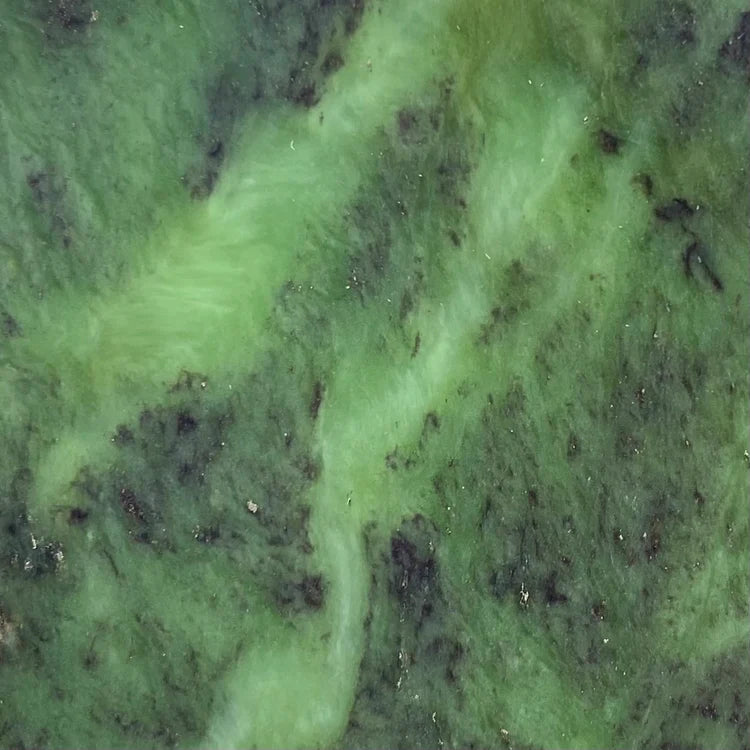
Nephrite Jade
Kawakawa
This type of jade comes in darker shades, from deep green to nearly black, earning its name from the resemblance to Kawakawa tree leaves. It often has black specks, adding character to this lovely stone.
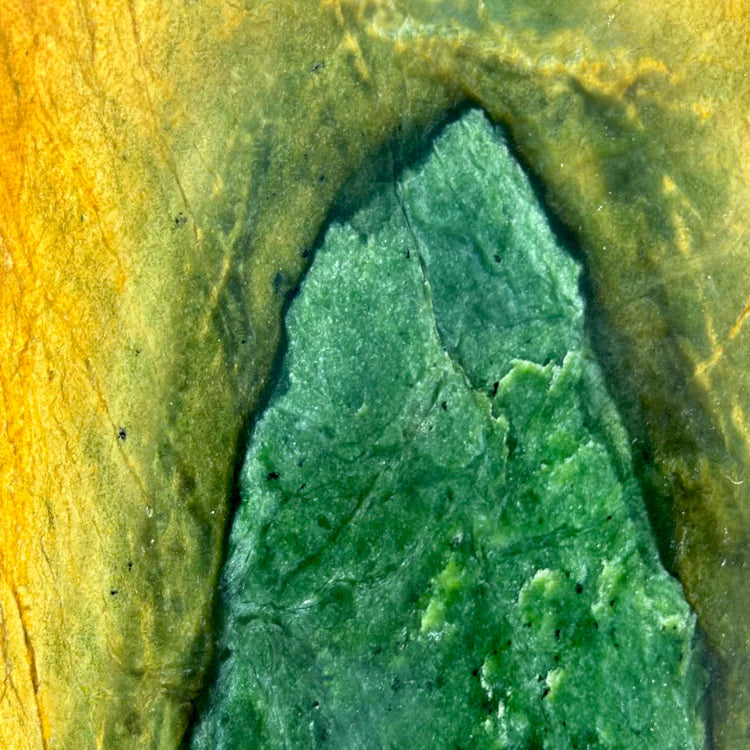
Nephrite Jade
Flower Jade
This type of jade is characterized by its intricate patterns resembling the delicate petals of flowers. This variety of pounamu typically features a mix of vibrant colours, including greens, whites, and sometimes hints of other hues.
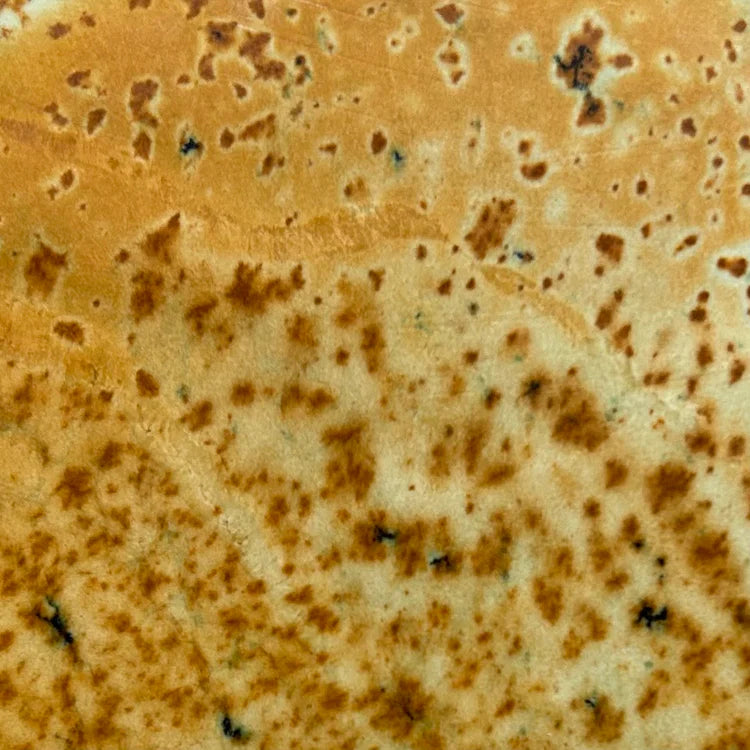
Nephrite Jade
Kōkopu
Kōkopu, also known as "spotted jade," is a type of pounamu distinguished by its spotted or speckled appearance. These spots often resemble the markings found on the kōkopu fish, hence the name. The stone typically displays a range of earthy tones, including greens, browns, and blacks, with the spots adding texture and character to its surface.
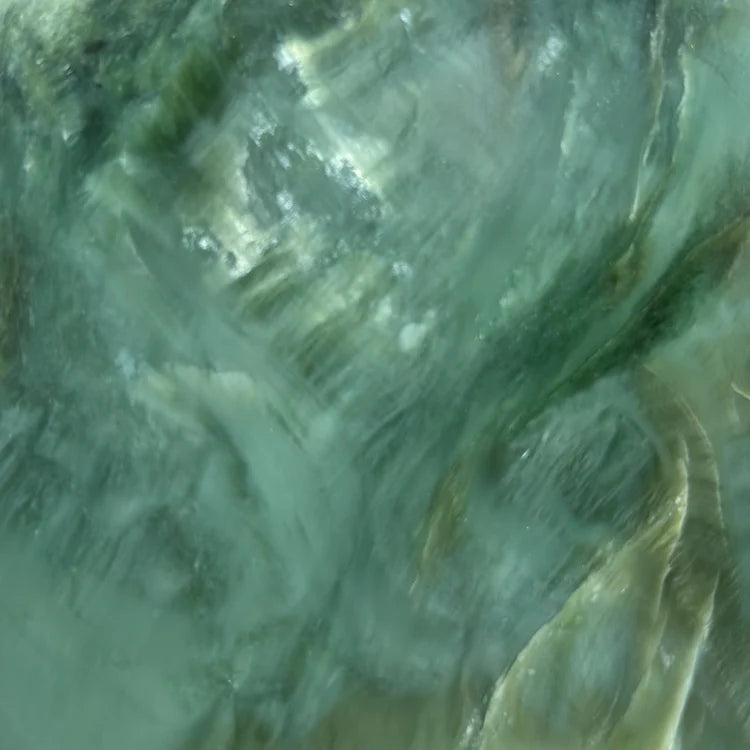
Nephrite Jade
Inanga
Inanga, also referred to as "whitebait," is a type of pounamu characterized by its pale, milky appearance, reminiscent of the colour of the inanga fish, a native New Zealand species. This variety of pounamu often features subtle shades of white, grey, and pale green, giving it a soft and delicate aesthetic.
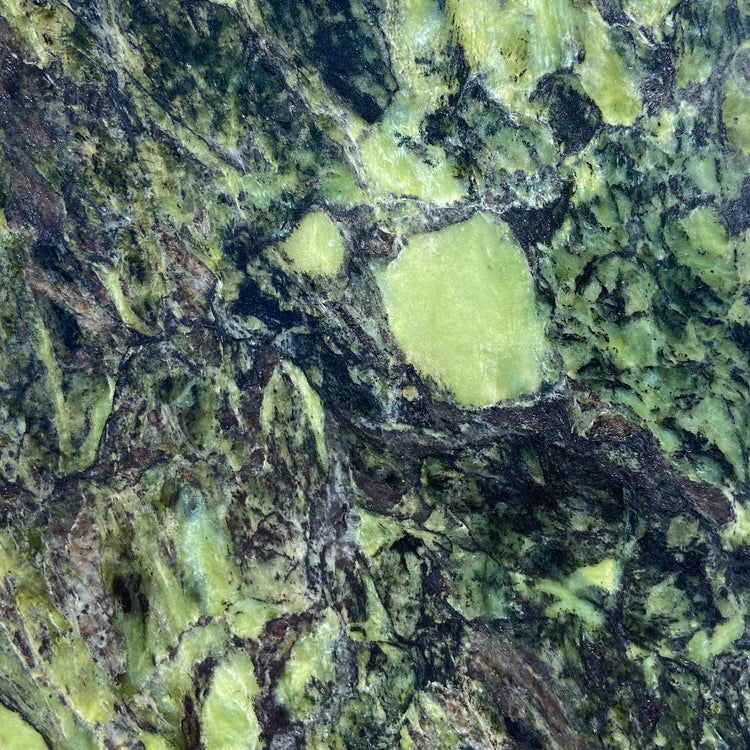
Serpentine / pounamu
Douglas Creek
Douglas Creek pounamu is a distinctive variety of New Zealand greenstone originating from the Douglas River area in the South Island. It is renowned for its rich green colouration and unique patterns, which can include swirls, lines, and speckles, giving each piece a distinct character.
